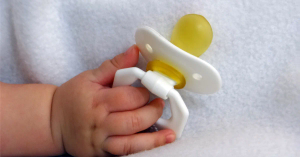Transitioning your child from bottles to sippy cups is a significant milestone in their early development. While it may seem like a simple change, this shift can have lasting effects on your child’s oral health. Prolonged bottle use, especially when filled with sugary liquids, can contribute to tooth decay and misalignment issues. In this article, we’ll explore the best ways to make this transition smooth, while protecting your child’s dental health in the process.
Why is Transitioning Important for Dental Health?
Bottles are convenient, but they can lead to several dental issues if used beyond the recommended age. Prolonged bottle-feeding can contribute to:
1.Baby Bottle Tooth Decay: Constant exposure to sugary drinks, including milk and juice, can lead to cavities.
2.Jaw Misalignment: Continuous sucking on bottles can affect how teeth align as they grow.
3.Delayed Oral Development: Using bottles beyond the toddler years may slow the natural development of oral muscles.
When Should You Transition from Bottles to Caps?
Most pediatricians and dentists recommend transitioning to sippy cups around the age of 12 to 18 months. At this stage, your child’s teeth are more vulnerable to decay, and continuing to use bottles can put their dental health at risk.
Steps to a Smooth Transition
1.Introduce Water in a Cup Early: Start giving your child water in a sippy cup when they are around six months old. This helps them get used to the new drinking method.
2.Wean Gradually: Gradually decrease bottle use by replacing one feeding with a sippy cup each day. Start with daytime feedings before moving to night feeds.
3.Choose the Right Cup: Look for spill-proof sippy cups with soft spouts or straws, which are gentler on your child’s gums and developing teeth.
4.Avoid Sugary Drinks: Limit sugary liquids like juice, as they can accelerate tooth decay when consumed in a bottle or sippy cup.
Tips for Encouraging the Switch
•Make it Fun: Let your child pick their own sippy cup with colorful designs or characters they like.
•Offer Praise: Positive reinforcement helps your child associate the new cup with a rewarding experience.
•Be Patient: It may take time, so stay consistent but patient as they adjust to the change.
Conclusion
Transitioning from bottles to sippy cups plays a crucial role in protecting your child’s dental health. By making the switch around 12 to 18 months, you reduce the risk of cavities and support healthy oral development. With a gradual approach and a few helpful tips, you can make this transition easier for your child, ensuring their smile stays bright and healthy for years to come.








